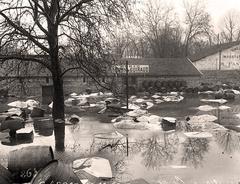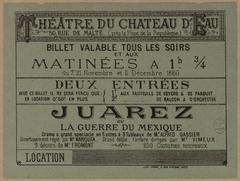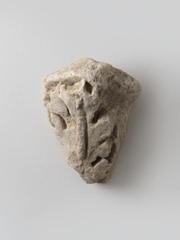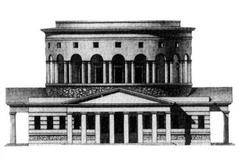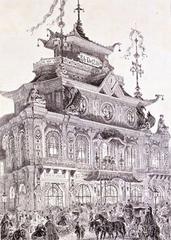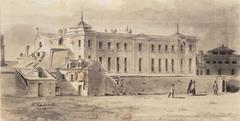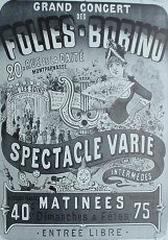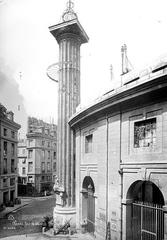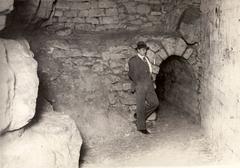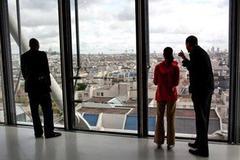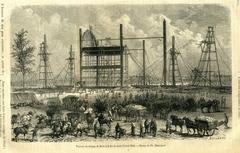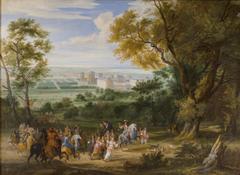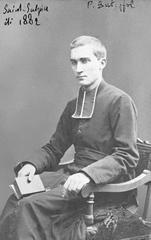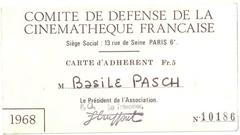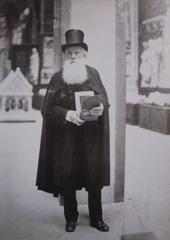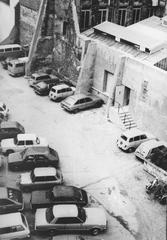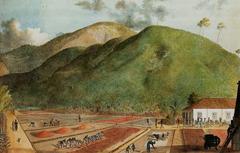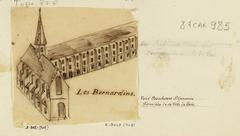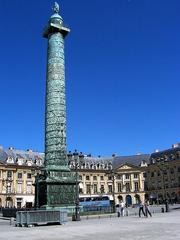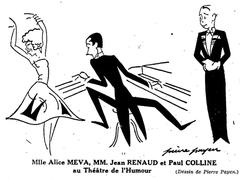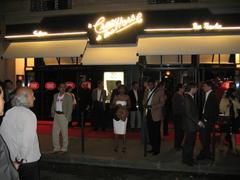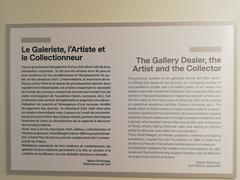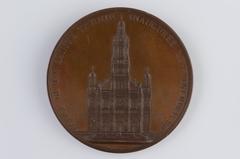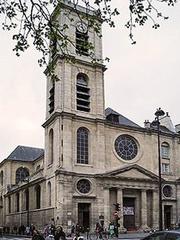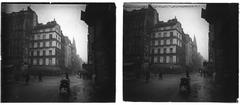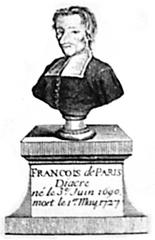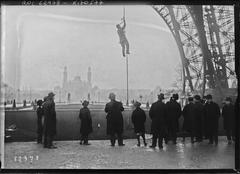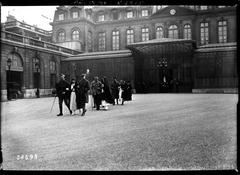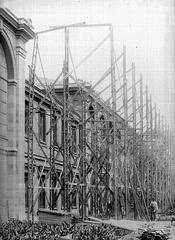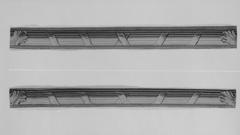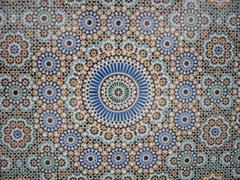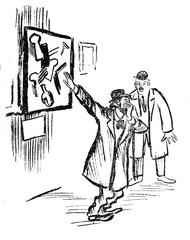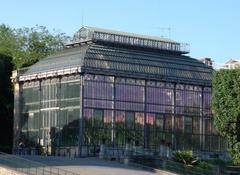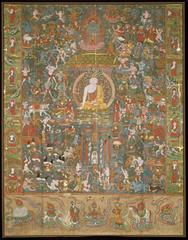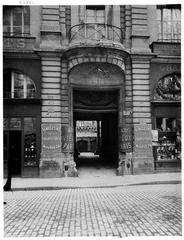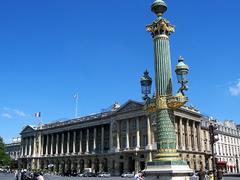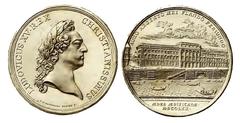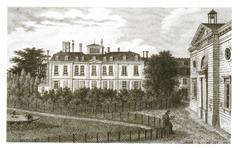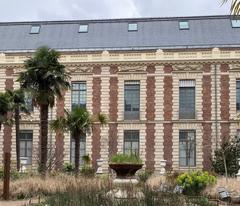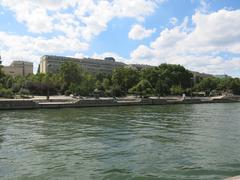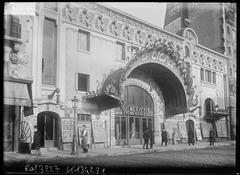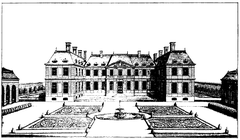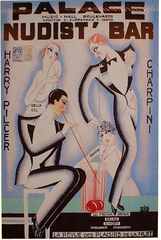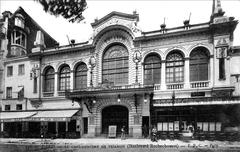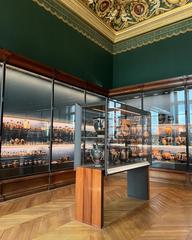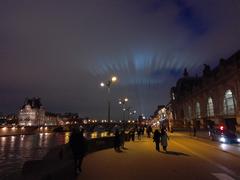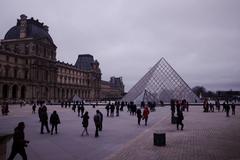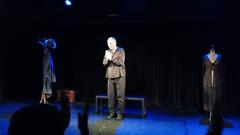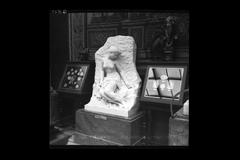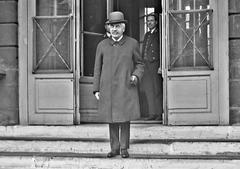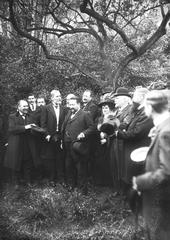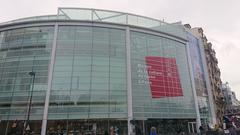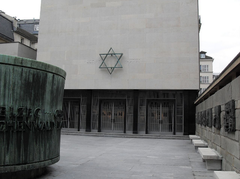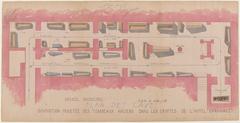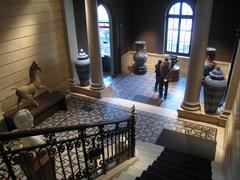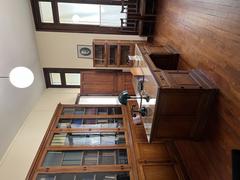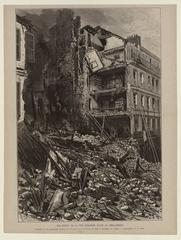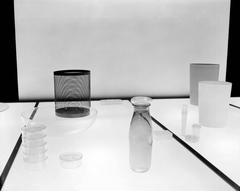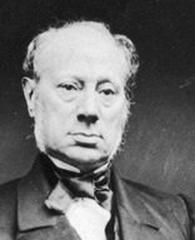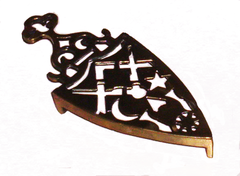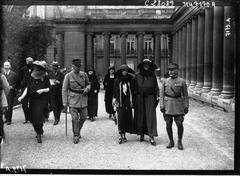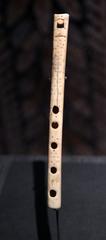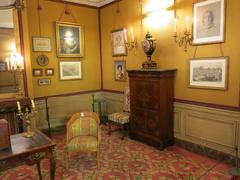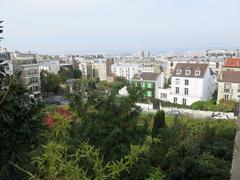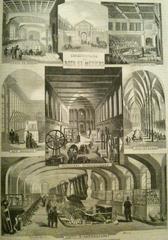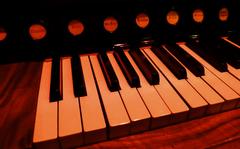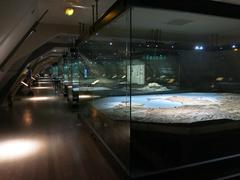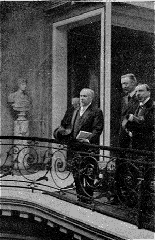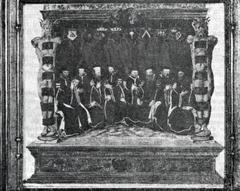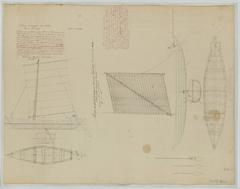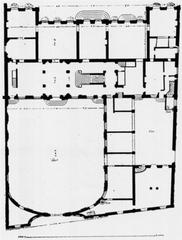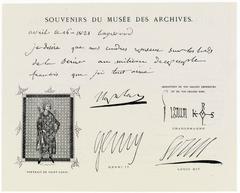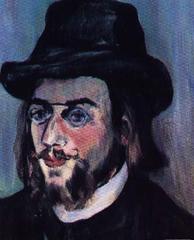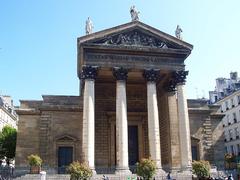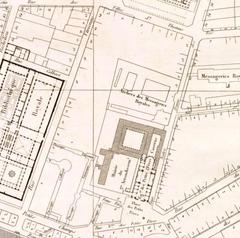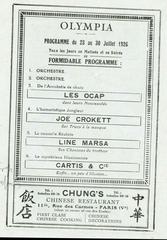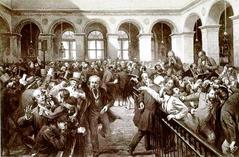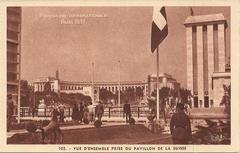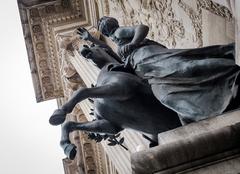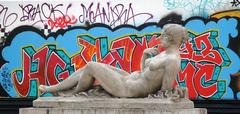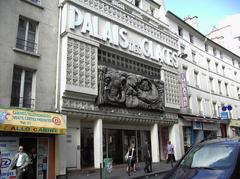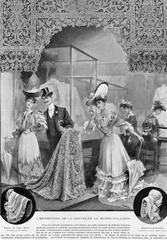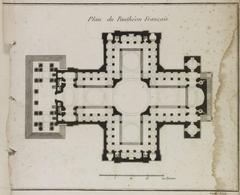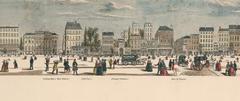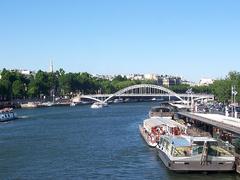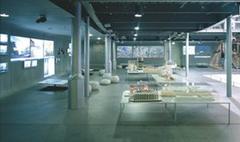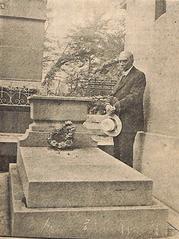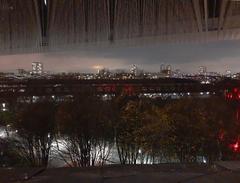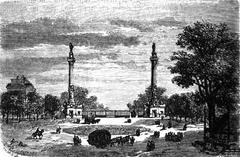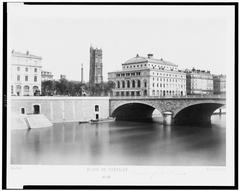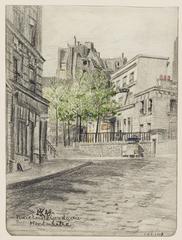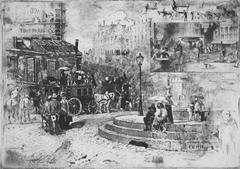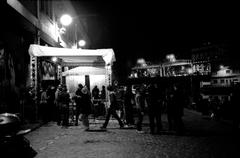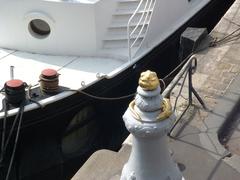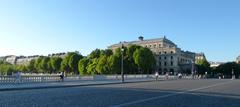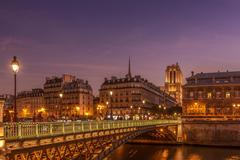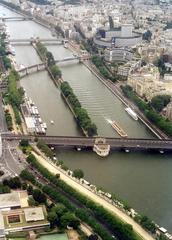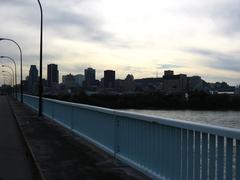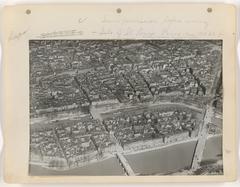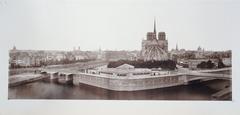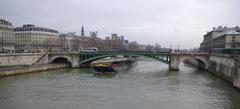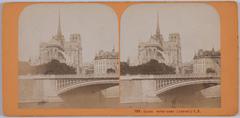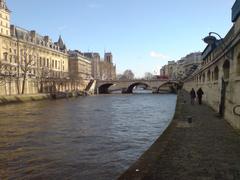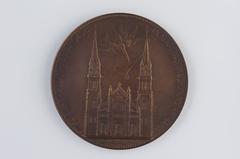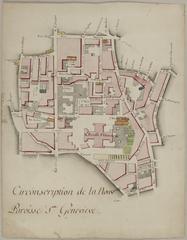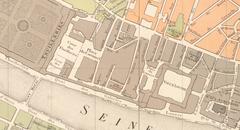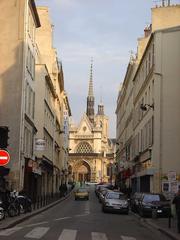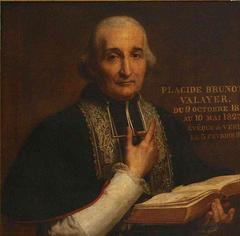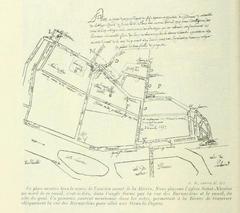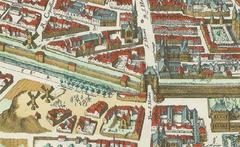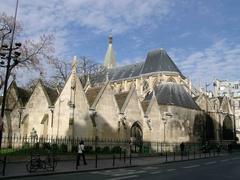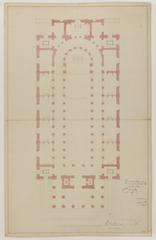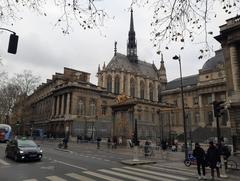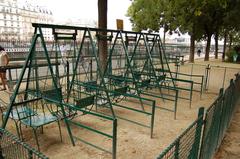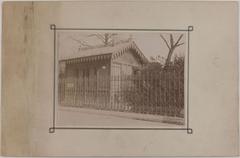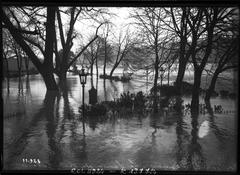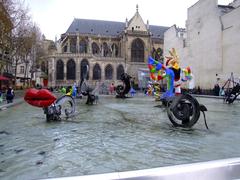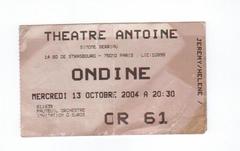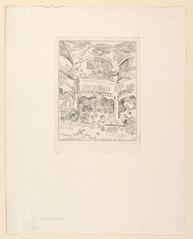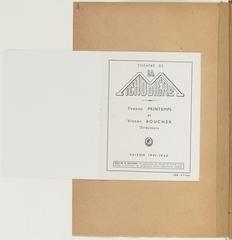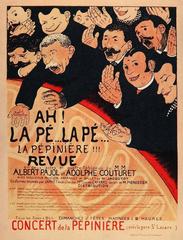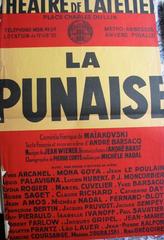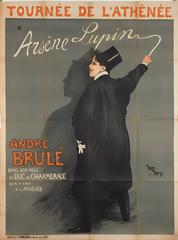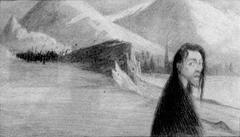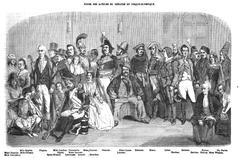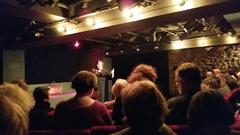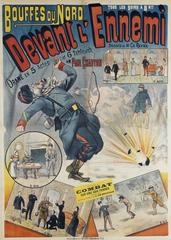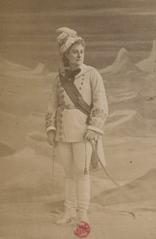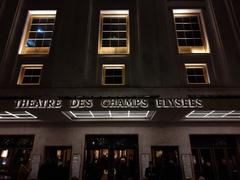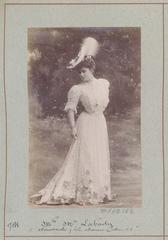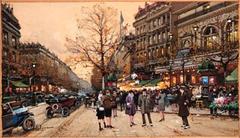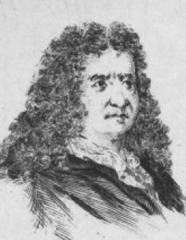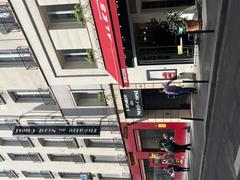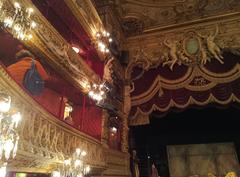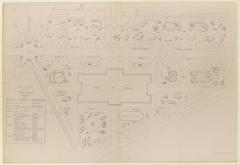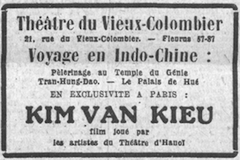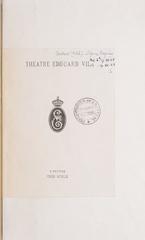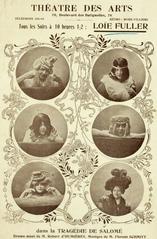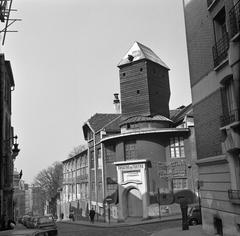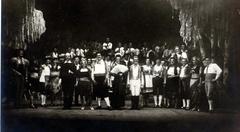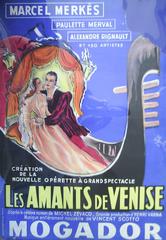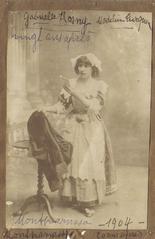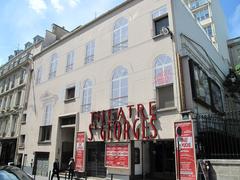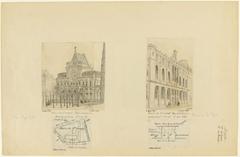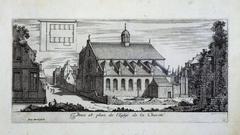A Comprehensive Guide to Visiting the Pont des Arts, Paris
Date: 17/07/2024
Introduction
The Pont des Arts, a pedestrian bridge that elegantly stretches over the Seine River in Paris, is more than just a means of crossing. It is a historical monument that embodies the spirit and evolution of the city itself. Commissioned by Napoleon Bonaparte between 1801 and 1804, the Pont des Arts was the first iron bridge in Paris, symbolizing the city’s embrace of progress and modernity during the Industrial Revolution (Napoleon.org). Its initial design by engineers Louis-Alexandre de Cessart and Jacques Dillon featured nine arches and a wooden deck, quickly becoming a cherished spot for Parisians and travelers alike. Over the years, the bridge witnessed numerous historical events and transformations, serving as a toll bridge, public promenade, and a subject of artistic inspiration for Impressionist painters like Camille Pissarro and Pierre-Auguste Renoir. Despite facing destruction due to ship collisions and the ravages of time, the Pont des Arts was meticulously reconstructed between 1981 and 1984 under the guidance of architect Louis Arretche and structural engineer Jack Lang, preserving its historical essence while incorporating modern engineering. Today, the bridge continues to captivate visitors with its picturesque views, cultural significance, and romantic allure, making it an indispensable part of the Parisian landscape.
Table of Contents
- Introduction
- The Dawn of a New Era - The First Iron Bridge (1801-1804)
- A Bridge for the People - From Toll Bridge to Public Promenade (1804-1979)
- The Scars of Time - Demolitions and Reconstruction (1979-1984)
- A Faithful Recreation - The Pont des Arts Reborn (1981-1984)
- Visitor Information - Visiting Hours, Ticket Prices, and Travel Tips
- Nearby Attractions
- Accessibility
- Special Events and Guided Tours
- The Pont des Arts Today - A Symbol of Love and Artistic Expression
- FAQ
- Conclusion
The Dawn of a New Era - The First Iron Bridge (1801-1804)
The Pont des Arts holds the distinction of being the first iron bridge in Paris. Commissioned by Napoleon Bonaparte, then First Consul of France, it was a symbol of progress and modernity. Designed by engineers Louis-Alexandre de Cessart and Jacques Dillon, the bridge was a testament to the burgeoning Industrial Revolution.
Construction began in 1801 and concluded in 1804. The bridge, initially named “Pont des Arts” after the Louvre Palace (Palais des Arts) situated nearby, featured nine elegant arches and a wooden deck. It quickly became a beloved spot for Parisians and visitors alike, offering stunning views of the Seine and its iconic landmarks.
A Bridge for the People - From Toll Bridge to Public Promenade (1804-1979)
Upon its completion, the Pont des Arts operated as a toll bridge. Pedestrians eager to traverse its length and soak in the panoramic views had to pay a small fee. This practice continued for several decades until 1848 when the bridge was opened to the public free of charge.
Freed from its toll-collecting duties, the Pont des Arts transformed into a vibrant public promenade. Artists, musicians, and vendors set up shop along its length, adding to the lively atmosphere. The bridge became a popular subject for painters, notably Camille Pissarro and Pierre-Auguste Renoir, who immortalized its charm in their Impressionist masterpieces.
The Scars of Time - Demolitions and Reconstruction (1979-1984)
The passage of time and the relentless flow of the Seine took their toll on the Pont des Arts. By the late 20th century, the bridge had suffered significant structural damage due to multiple ship collisions and the weight of increasing traffic. In 1979, a barge collided with the bridge, causing a substantial section to collapse.
Deemed unsafe, the Pont des Arts was closed to the public. The decision was made to dismantle the bridge and rebuild it entirely. The original ironwork was carefully preserved, with some sections finding new homes in various locations, including the port of Nogent-sur-Seine.
A Faithful Recreation - The Pont des Arts Reborn (1981-1984)
The reconstruction of the Pont des Arts began in 1981, guided by a commitment to preserve the bridge’s historical and aesthetic essence. Architect Louis Arretche and structural engineer Jack Lang led the project, aiming to recreate the bridge’s original design while incorporating modern engineering techniques.
The new Pont des Arts, completed in 1984, closely resembled its predecessor. Constructed with steel, it retained the nine graceful arches and wooden deck of the original iron bridge. The new structure, however, was designed to be wider and more robust, ensuring its longevity and ability to withstand the test of time and the demands of modern Parisian life.
Visitor Information - Visiting Hours, Ticket Prices, and Travel Tips
Visiting Hours
The Pont des Arts is open 24 hours a day, seven days a week, making it accessible for a leisurely stroll or a romantic evening under the stars.
Ticket Prices
There is no entrance fee to access the Pont des Arts. It remains a free public space for everyone to enjoy.
Travel Tips
The best time to visit is during the early morning or late evening to avoid the crowds and enjoy the serene beauty of the Seine. Don’t forget your camera—this bridge offers some of the best photographic spots in Paris.
Nearby Attractions
Located near the Louvre Museum and the Institut de France, the Pont des Arts is perfectly situated for a day of exploration. Other nearby attractions include the Musée d’Orsay, the Notre-Dame Cathedral, and the Sainte-Chapelle.
Accessibility
The Pont des Arts is easily accessible by foot, bicycle, or public transportation. The closest metro stations are Louvre-Rivoli (Line 1) and Pont Neuf (Line 7). The bridge is also wheelchair accessible, ensuring everyone can enjoy its beauty.
Special Events and Guided Tours
Throughout the year, the Pont des Arts hosts various cultural events and art installations, adding to its vibrant atmosphere. Guided tours are available for those interested in learning more about its rich history and architectural significance.
The Pont des Arts Today - A Symbol of Love and Artistic Expression
Today, the Pont des Arts stands as a beloved symbol of Paris, attracting millions of visitors each year. It has become a popular spot for couples to express their love by attaching “love locks” to its railings, a tradition that, while controversial due to the weight and potential damage, adds a unique layer to the bridge’s story.
The Pont des Arts continues to inspire artists and photographers, drawn to its picturesque setting and romantic aura. It remains a vibrant public space, a place for leisurely strolls, impromptu picnics, and breathtaking views of the Seine and the Parisian skyline. The bridge’s enduring appeal lies in its ability to connect the past and present, offering a tangible link to Paris’s rich history while embracing its modern spirit.
FAQ
What are the visiting hours for Pont des Arts? The Pont des Arts is open 24/7.
Is there an entrance fee for Pont des Arts? No, access to the Pont des Arts is free.
How do I get to Pont des Arts? You can reach the Pont des Arts via the Louvre-Rivoli (Line 1) and Pont Neuf (Line 7) metro stations.
Are there guided tours available? Yes, guided tours are available to provide more insight into the bridge’s history and significance.
Conclusion
In conclusion, the Pont des Arts stands as a testament to Paris’ rich history and enduring charm. From its groundbreaking construction as the first iron bridge in the city to its role as a vibrant cultural hub and symbol of love, the Pont des Arts encapsulates the essence of Parisian life and spirit. Its accessibility, free admission, and proximity to other iconic landmarks like the Louvre and Notre-Dame Cathedral make it a must-visit destination for anyone exploring the city. Whether you’re an artist seeking inspiration, a couple looking to share a romantic moment, or a traveler eager to immerse yourself in the history and culture of Paris, the Pont des Arts offers something unique and unforgettable. For more information on visiting the Pont des Arts and other Parisian landmarks, download the mobile app Audiala and follow us on social media for updates and travel tips.
References
- Pont des Arts - History, Visiting Hours, and Tickets, 2024, Author (Napoleon.org)
- Pont des Arts - Visiting Hours, Tickets, and Historical Significance in Paris, 2024, Author (Napoleon.org)
- Pont des Arts Visiting Hours, Tickets, and Practical Tips, 2024, Author (Napoleon.org)
